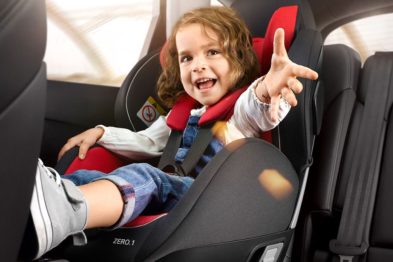In Ukraine, the rules for the transportation of children are synchronized with European requirements. These innovations are shared in Europe and have been introduced relatively recently. They are strict, but at the same time, they ensure maximum safety for the child and the driver’s compliance with the necessary safety measures that protect the child’s life as a passenger.
Law On The Transportation Of Children In A Car
All legislative norms on the transport of children are concentrated in the Traffic Rules approved by the Cabinet of Ministers. They are regularly updated and have the force of law. Various instructions and explanations of ministries and departments also apply, but the traffic rules provide the main rules. The rules contain more than ten points, clearly explaining how such regular or irregular transfers should be carried out.
The Law on traffic rules and the transportation of children separates an ordinary trip with a child and organized group transportation.
A group is considered the transportation of 10 children with the group leader. If you plan a trip of more than 30 participants, there must be a person with practical medical knowledge. In addition, there are special rules for such a trip:
- The speed is strictly fixed – no more than 80 km/h;
- The driver must have a category no lower than D;
- The driver must have at least five years of experience.
The Megatrans company provides high-quality road transportation services, including long-distance transfers or local transportation around the city. The company will provide a driver and a safe, comfortable bus for transporting children. Such a bus rental will ensure the optimality of costs and the necessary level of comfort and quality of transportation.
The experience of the company’s drivers and the technical capabilities of buses, minibusses, and minivans will help solve the transportation problem. Organizing a transfer for families with babies, toddlers, and teens is not a problem.
Rules For Transporting Children Of Different Ages
Innovations in force in the traffic rules since 2021 have slightly changed the usual rules for transporting children in a car for specific categories. However, there are travel recommendations for children of a certain age. In addition, there are special rules for using mandatory child seats.
Transportation Of Newborns
The newborn should be carried in an infant carrier, which is specially fastened and has a reinforced structure. The rules do not give special instructions on this matter. The only clarification is that the carrier must be installed with its back facing forward and horizontally. There are also children’s chairs of category 0+. For children from 6 months, it is possible to use chairs of class I, and a little older – class II, according to the rules of the EEC (European Economic Commission).
Transportation Of Children Up To 7 Years Old
There is a general rule – special children’s seats. You must have a seat for all children shorter than 145 cm. These seats must be of II-III groups according to the EEC classification. At this age, children are already fastened with a standard safety belt. Usually, these are so-called transforming chairs since they can be changed for different ages of the child.
Transportation Of Children From 7 To 12 Years Old
The same rule applies here – a children’s chair. This is usually a booster seat or a booster seat with a back. The child is fixed with a standard safety belt.
Transportation Of Children Over 12 Years Old
If there is no child car seat, previously, the rules forbade the ride until 12 years in the front, in the seat next to the driver. Now there is no such restriction. A child becomes an adult passenger not according to the legislative norm about the age of the child – 18 years – but according to his physical characteristics, which allows him to use the safety belt fully.
At What Age Do You Need A Car Seat?
The age is unlimited. Only the height of the child is essential – 145 cm. In the old rules, there was an age limit. Now it has been removed. Usually, a child reaches a height of 145 cm in 10–12 years.
How To Install A Car Seat In A Car
The car seat is installed in the car on the second row. It is possible to fix it with traditional means. The seat models differ, but their common feature is a reliable blocking coverage of the entire structure.
At What Age Can A Child Take In The Front Seat?
A child up to three years old can ride in the car in the first row in a particular carrier. And the airbag is turned off.
Transportation of older children in the front seat in a chair or without it is prohibited. It’s not safe. We are not talking about age but the child’s height – 145 cm. Most likely, this requirement was introduced due to the need to consider height and weight, physical level of development, and not just the number of years. It is important that the car’s safety system can work in a critical situation and deflect the blow from the most unprotected passenger.
Penalties For Violation
The Code of Administrative Offenses has specific norms that provide for the violation of specified points of the Traffic Rules. They are not too severe but still remind the driver of his liability before the law for failure to comply with safety measures.
If the driver violates the restrictions and requirements stipulated by law, he faces a fine for not having a child seat or improperly seating the child in the car cabin. For the first time, such a violation will be “pulled” by UAH 510. Repeated non-fulfillment of the requirements – UAH 850. However, the most critical thing in this situation is the moral side of the issue.
The safety of the child should be a priority. And the issue, of course, is not in the number of fines but in the child’s safety, which must be ensured by the person who drives the car.
Summing up, note that additional obligations of the carriers ensure the transportation of children by bus. And for the driver of a private car – particular requirements for placing a child. In any case, this is a very responsible transfer. And the law imposes special and justly increased requirements on those who carry out such transportation.



